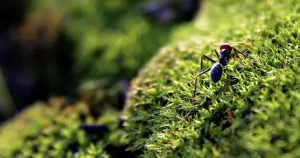In 1831, Charles Darwin boarded the HMS Beagle and went on a voyage around the globe visiting unusual new lands and finding out unique natural world. After his return in 1836, he started formulating what has turn into probably the most well-known and accepted concept in regards to the origins of life on Earth. The premise for his understanding of evolution got here from his go to to the Galapagos Islands, an archipelago that has been so remoted that it turned dwelling to vastly numerous endemic wildlife. There are a number of different remoted areas the place life developed in a different way from what we generally see and listed below are a number of of them.
Between the 63rd and 76th streets of New York Metropolis, scientists found a brand new species of ant that is not discovered wherever else on Earth. They name it the “ManhattAnt.” New York can be dwelling to distinctive species of centipede, candy bee, and white-footed mouse.

Based on Rob Dunn, a biology professor at North Carolina State College, the ant is a relative of cornfield ant. Although it appears to be like prefer it’s from Europe, the scientists couldn’t match it to any European ant nor does it match any of the identified 13,000 different species of ants. The ManhattAnt may need developed in isolation within the “concrete jungle” and tailored to the hotter, drier surroundings of town. One other issue is their eating regimen of city meals wealthy in corn syrup, which scientists consider to be the explanation for prime ranges of carbon of their our bodies.
The ManhattAnt isn’t the one new species present in New York Metropolis. In 2002, scientists found a brand new species of centipede in Central Park. In 2010, a brand new species of candy bee was present in Prospect Park. Scientists finding out the white-footed mouse, a local of North America, discovered that the mice of town are fairly completely different genetically from their counterparts within the nation. In truth, in response to Jason Munshi-South of Baruch Faculty, “…each park in New York has a genetically completely different inhabitants as a result of they’re so remoted and alter over time.” (supply)
The Himalayas which make up the transition zone between the Palearctic and Indomalayan realms is a hotspot for biodiversity and endemism. It’s dwelling to three,160 species of crops and 147 species of animals which might be endemic.
The Himalayas which make up the transition zone between the Palearctic and Indomalayan realms is a hotspot for biodiversity and endemism. It’s dwelling to three,160 species of crops and 147 species of animals which might be endemic.
The Himalayan local weather ranges from being a tropical one on the base to everlasting ice and snow on the prime. Simply because the local weather varies, so does the natural world. The mountain vary is dwelling to endemic species of animals such because the Himalayan serow, Himalayan tahr, the takin, the Himalayan musk deer, and the Himalayan goral. It additionally boasts many native species which might be changing into endangered on account of over-exploitation, habitat loss, and local weather change. (1, 2)
Lake Tanganyika, an African Nice Lake, is so outdated and deep that it has developed to be an ocean unto itself. It’s dwelling to over 300 species of fish, reptiles, mollusks, and crustaceans that can’t be discovered wherever else on this planet.
The lake is understood for its large number of fish, particularly the 250 species of colourful cichlid fish of which 98% are endemic. The threatened subspecies of cobra generally known as “Storm’s water cobra” can be solely discovered within the lake. A number of freshwater species of snails, crabs, shrimp, leeches, sponges, jellyfish, and plenty of different animals that aren’t wherever else might be discovered right here. (1, 2)






